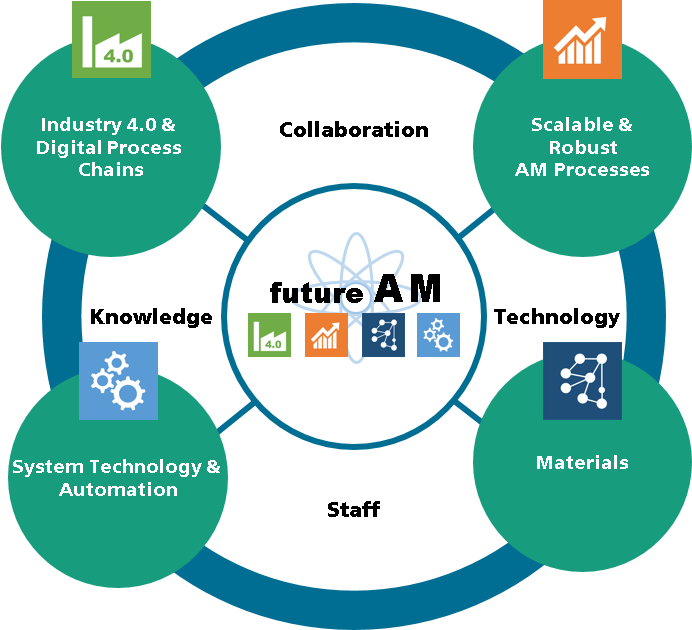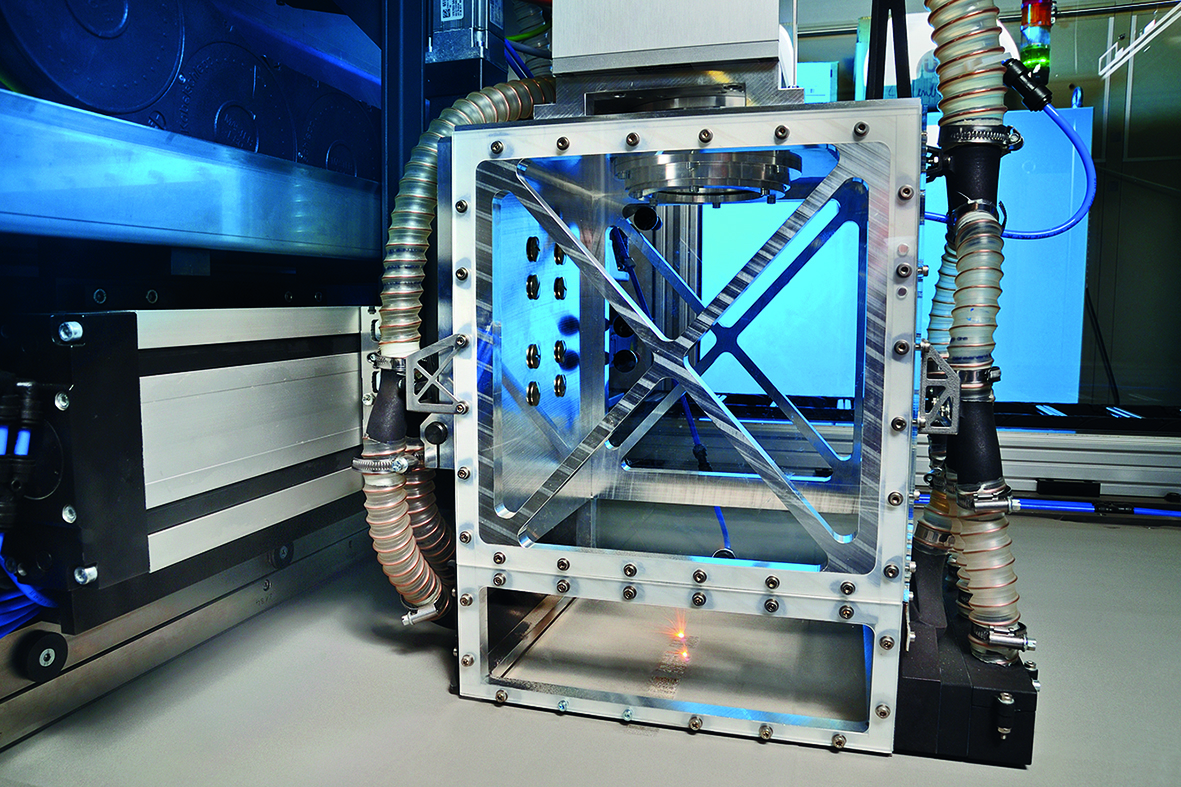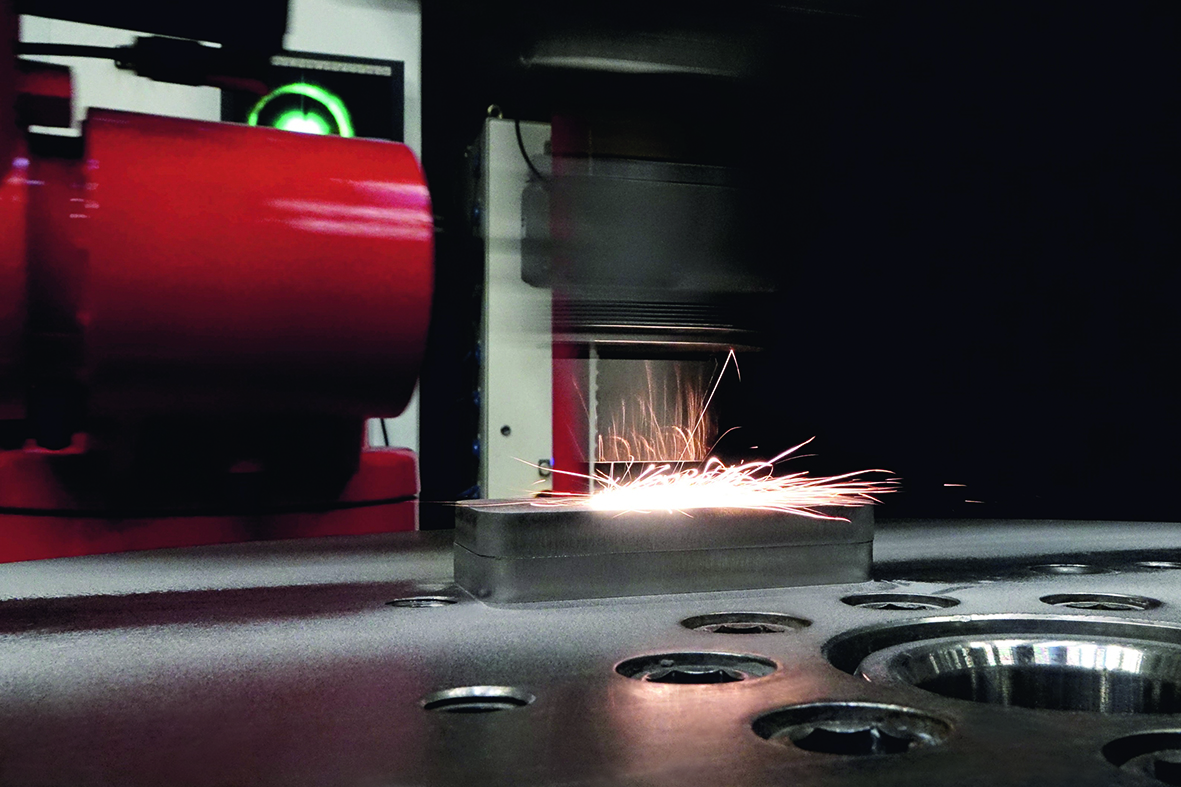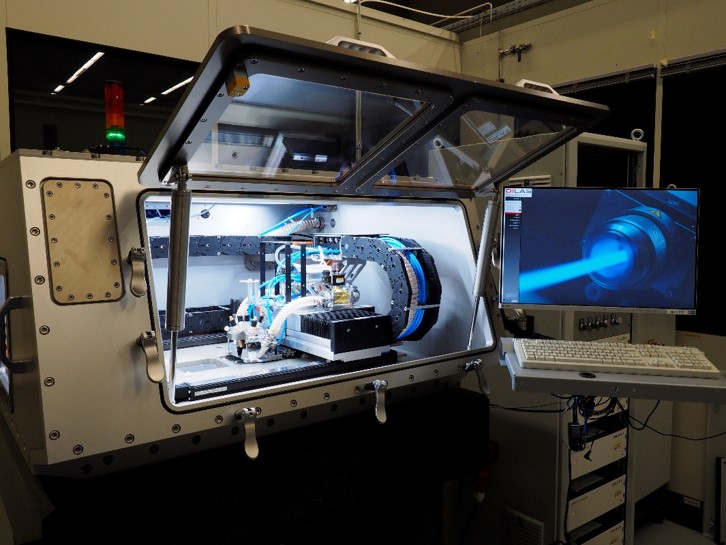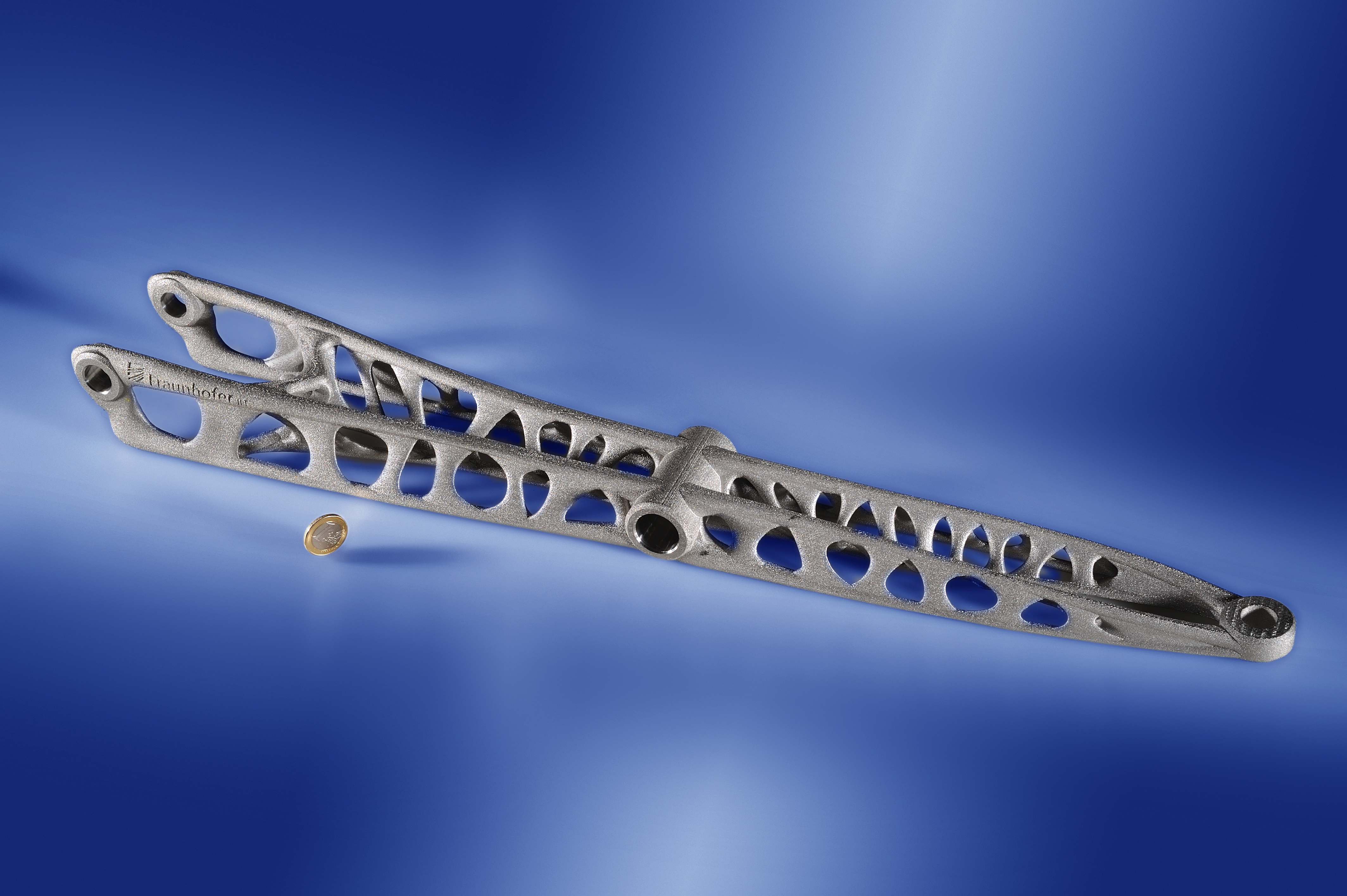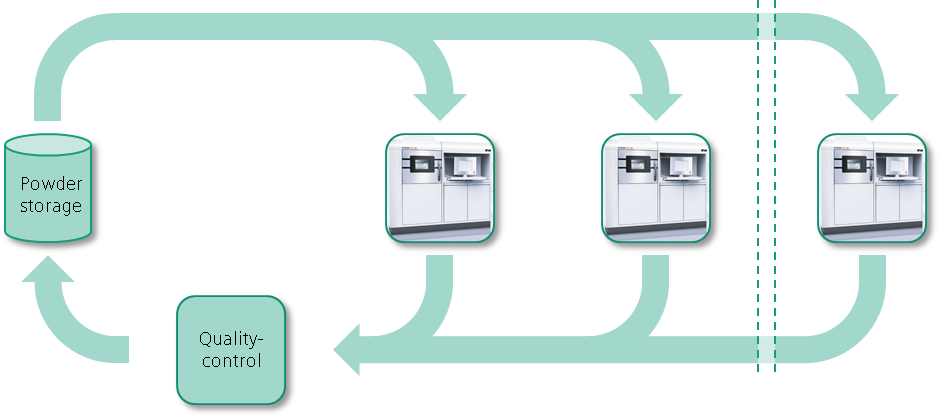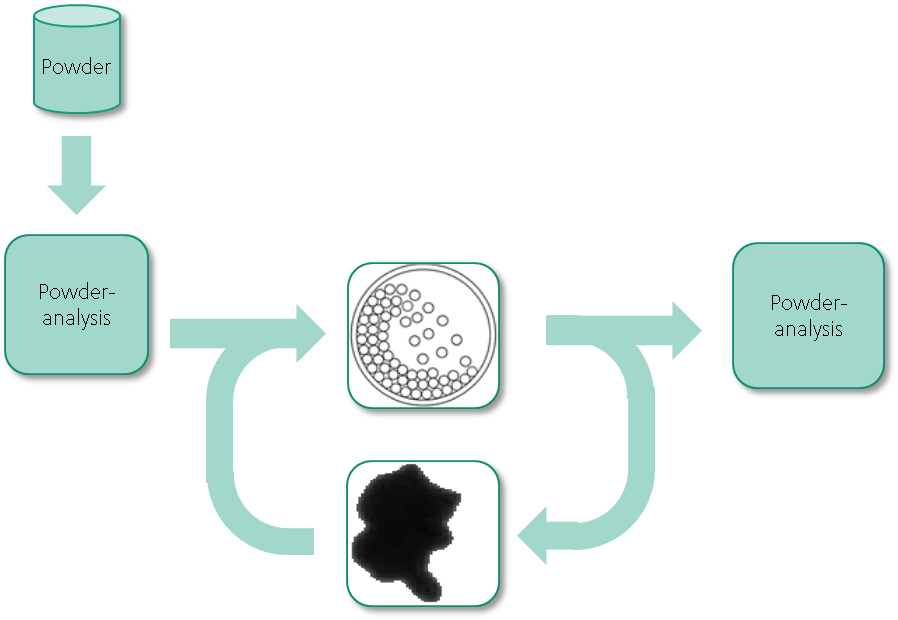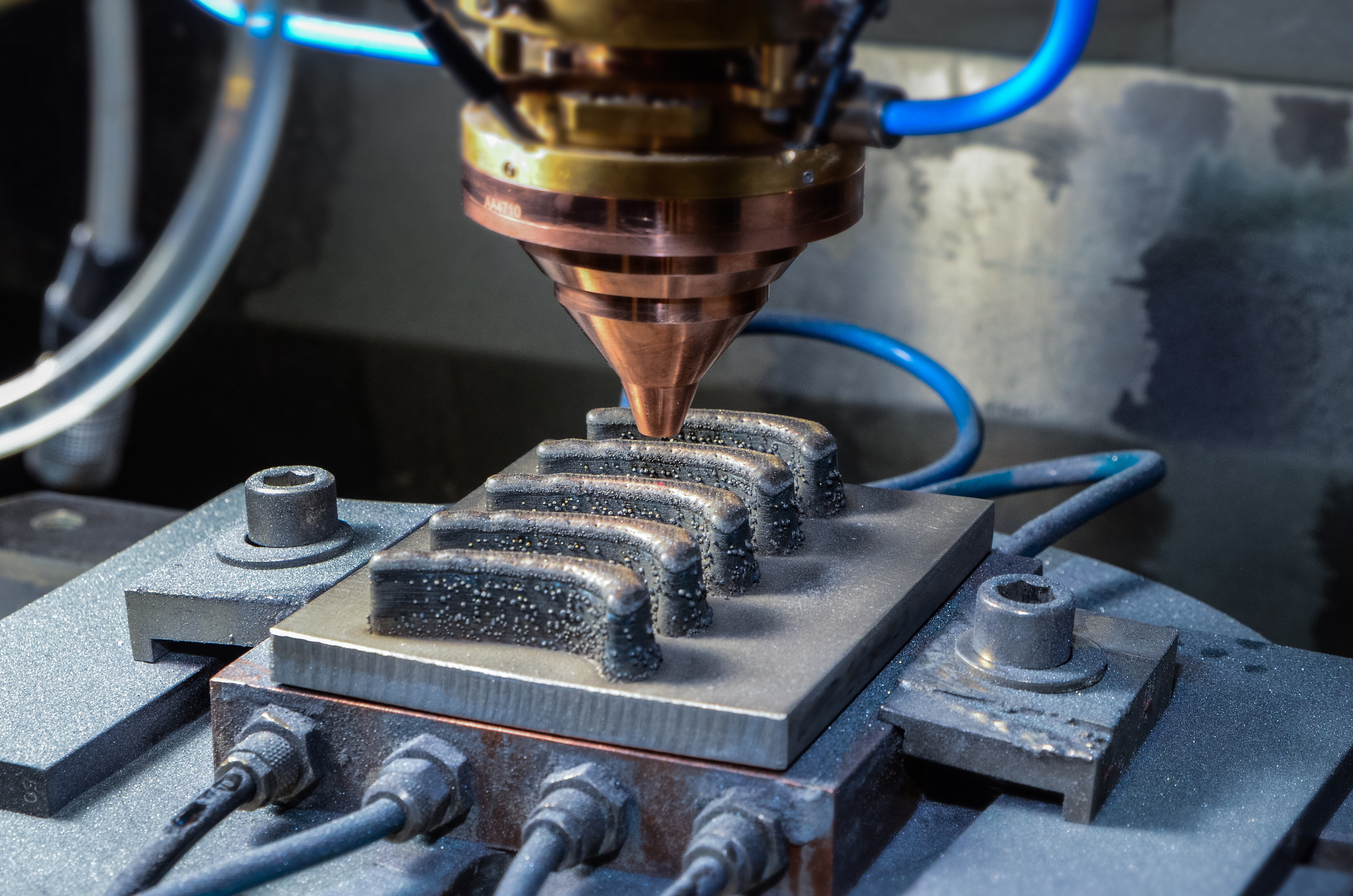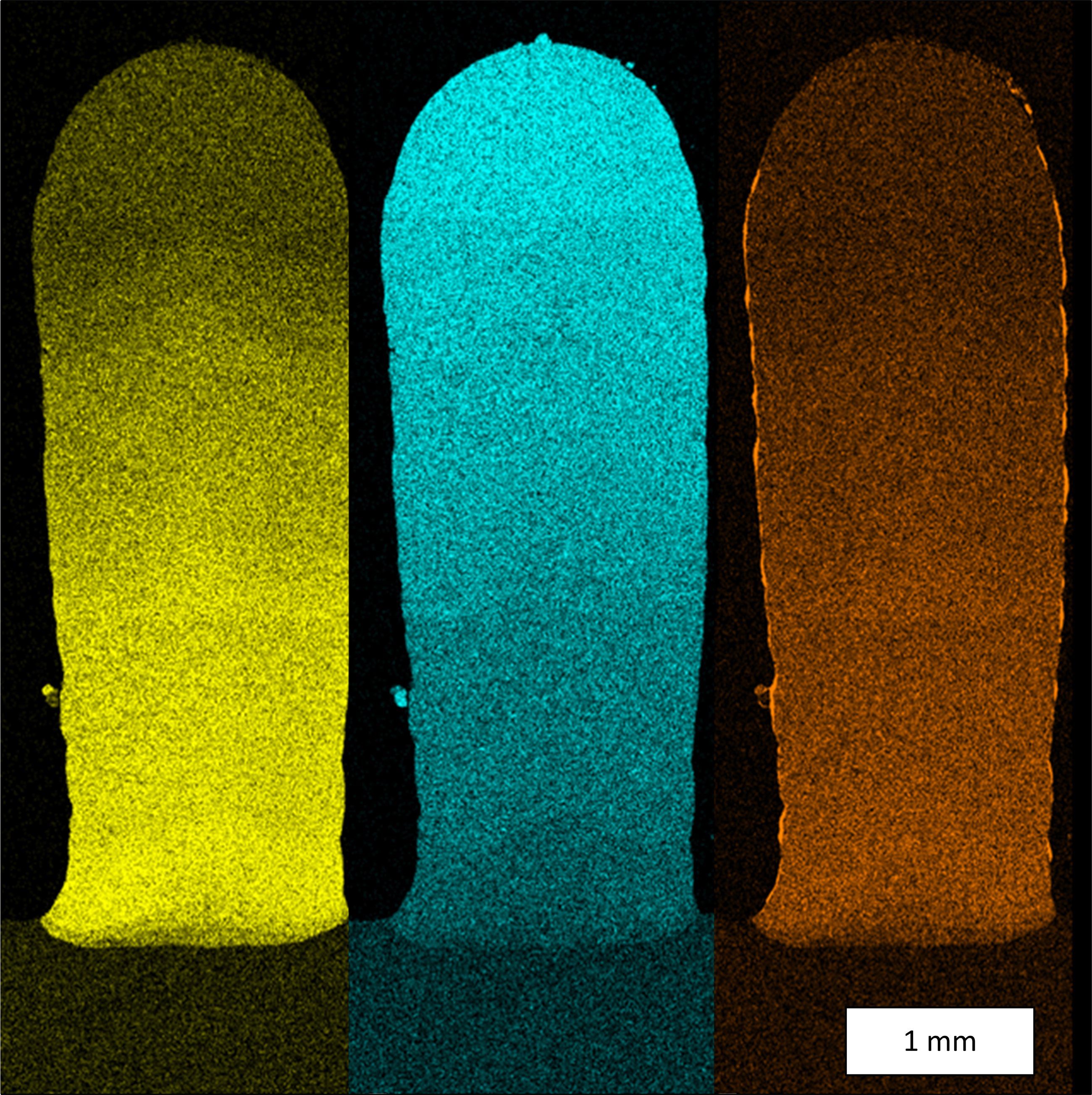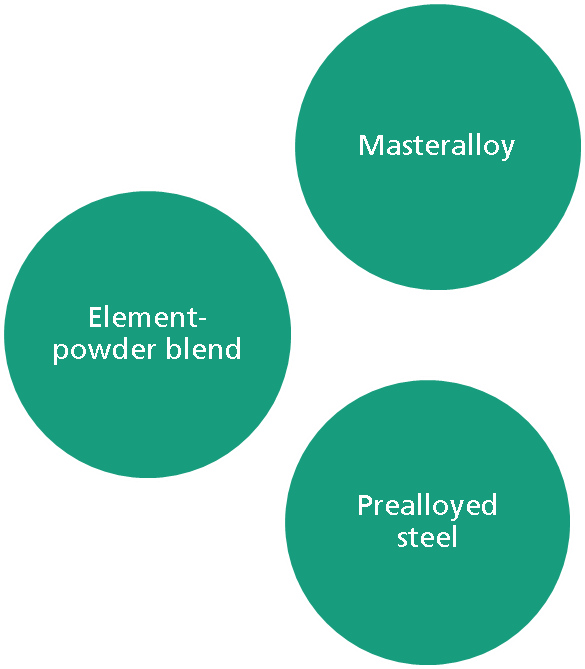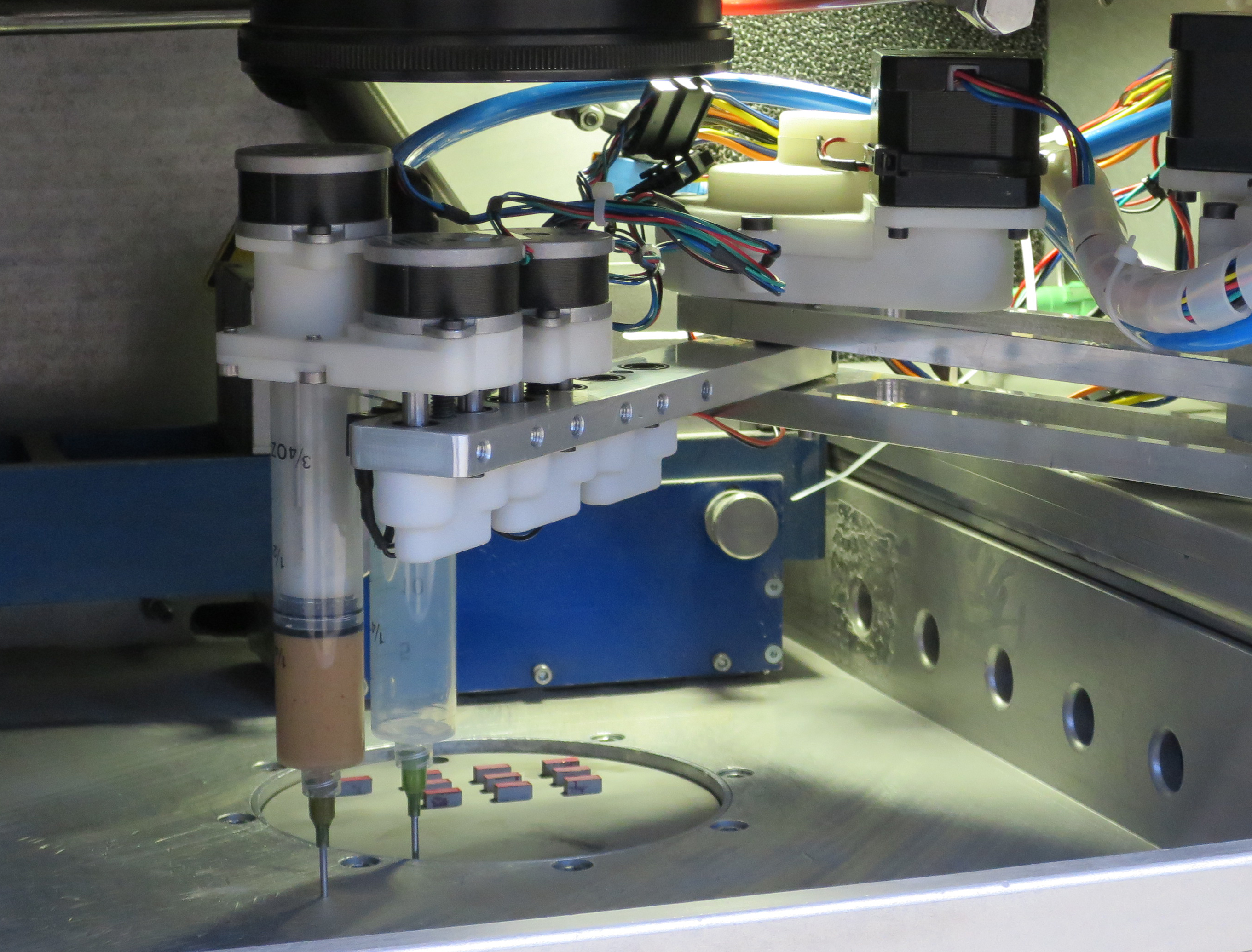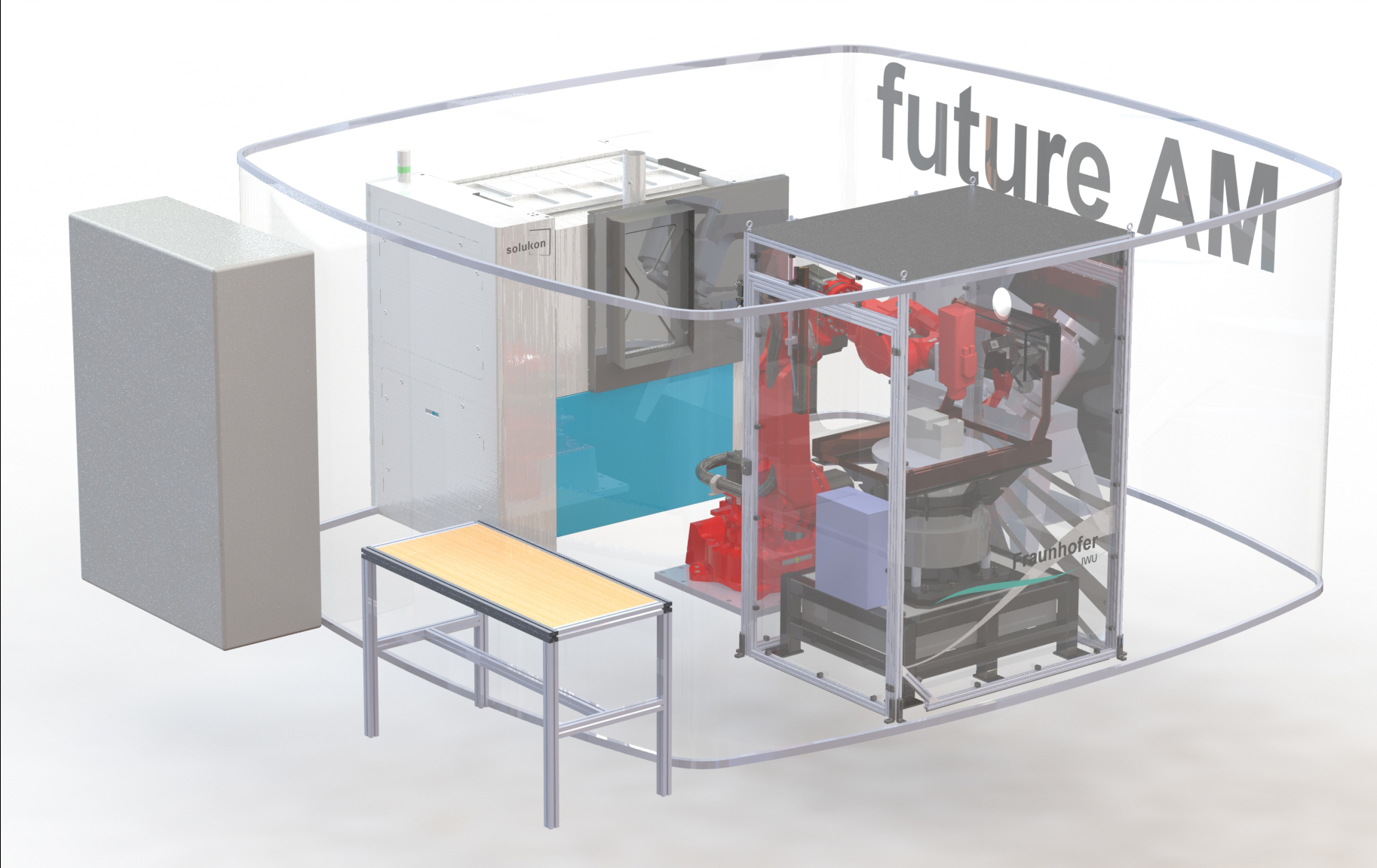Scalable LPBF system concept with productivity increase by a factor of 10
As part of futureAM, the scientists at the Fraunhofer ILT have developed a machine concept for the LPBF of large metal components. A new laser head was developed for the laboratory system with a very large, effectively usable build volume (1000 mm x 800 mm x 500 mm), which increases productivity by a factor of 10 compared to conventional LPBF systems.
EHLA for Additive Manufacturing
A multi-award-winning technology is involved in “Extreme High-Speed Laser Material Deposition (EHLA)”, which can coat, repair or additively manufacture components in a particularly economical and environmentally friendly way. This technology has already proven its worth by applying thin protective layers, for example on meter-long offshore cylinders at high speeds. So far, EHLA has been used only in rotationally symmetric parts. The next step is to create 3D geometries. For this purpose, a prototype machine is being built in Aachen, where the workpiece is moved in a highly dynamic manner with up to five times the gravitational acceleration under the EHLA powder nozzle.
Direct Error Detection
In addition, the Aachen scientists are working on new methods for monitoring the 3D printing of metals in order to increase process robustness. With structure-borne sensors in the construction platform, critical events, such as when support structures tear off, are detected in the future. Ultrasonic sensors are also used to analyze airborne sound in order to determine component quality. Research into laser-based ultrasound measurement will go a step further in the future: a pulsed laser will induce structure-borne noise in the component, which in turn will be detected by a laser vibrometer. Tiny pores on the spot should be found in order to be able to intervene immediately. The in-situ measurement process should, for example, make it possible to rework problem areas with another exposure sequence.
Process Robustness and Extreme Build-Up Rates
The increase in process robustness is achieved by integrating quality assurance tools in (hybrid) production systems, e.g. for geometric recording and in-situ process analysis. In addition to inline measurement and quality assurance, the identification of a robust process window for various materials, machines, beam sources etc. is indispensable for area-wide industrial use.
The development of a process for volume build-up with Laser Material Deposition LMD with extreme build-up rates aims at reducing the €/cm³ price of the built-up material.
 futureAM – Next Generation Additive Manufacturing
futureAM – Next Generation Additive Manufacturing